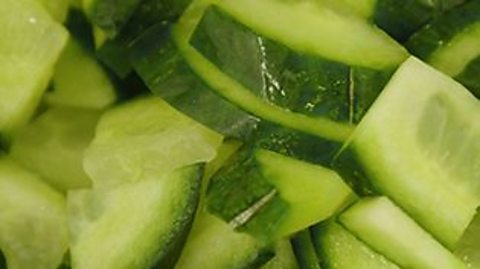Key points
Digestion is the process of the food we eat being broken down into substances that our bodies can use.
The digestive system provides our body with the energy it needs.
It is vital that our body gets the correct amounts of each food group in every meal.
Video
Have a go
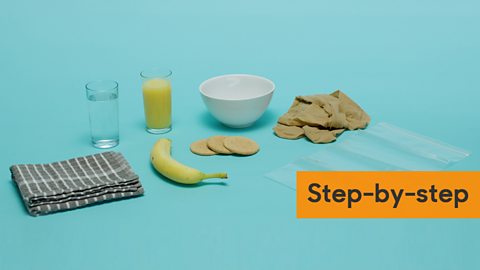
Image caption, Click to see a step by step slideshow.
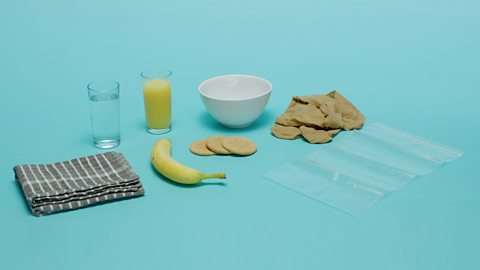
Image caption, WHAT YOU NEED: A tea-towel, a glass of water, a glass of orange juice, a banana, a bowl, some biscuits, a sealable plastic bag and one leg from a pair of tights.
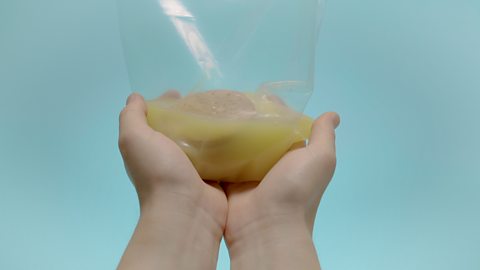
Image caption, STEP 1: Mix the food.
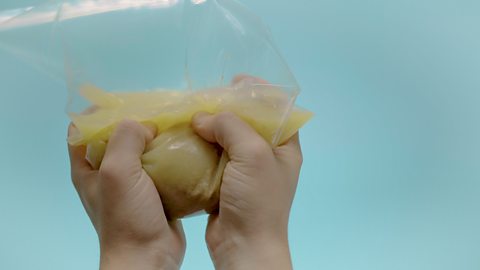
Image caption, STEP 2: Churn the contents in the bag.
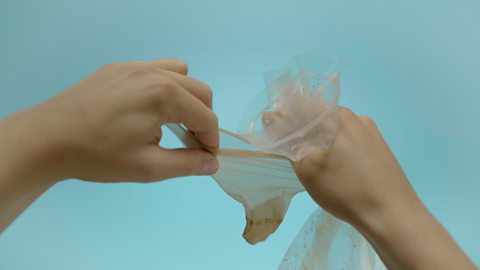
Image caption, STEP 3: Transfer the mixture to a pair of tights.
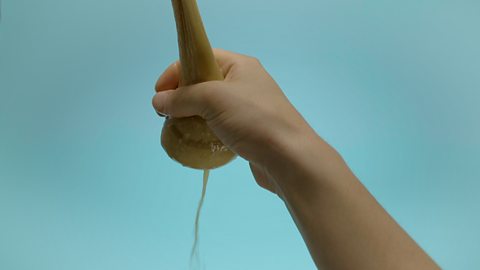
Image caption, STEP 4: Squeeze.

Image caption, STEP 5: Dry out!

Image caption, STEP 6: Cut a hole in the pair of tights.
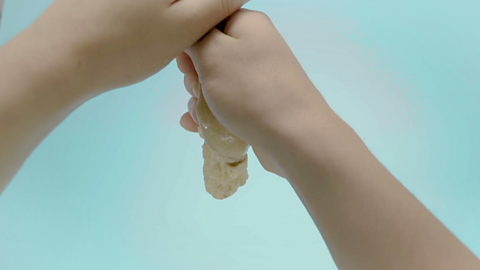
Image caption, STEP 7: Squeeze out through the hole.
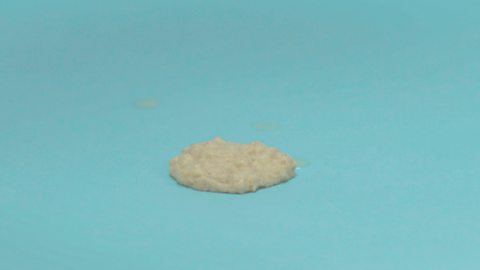
Image caption, STEP 8: The result of the digestive system. Poo.
1 of 10
Digestion questions
What is digestion?
Digestion is an important process in the human body. It helps us get the nutrients our body needs to stay healthy.
Digestion happens in the digestive system, which begins at the mouth and ends at the anus.
What nutrients does the body need?
A balanced diet provides the body with the correct amount of each food group, so the body can function at its best:
- Carbohydrates
- Lipids (fats and oils)
- Proteins
- Vitamins
- Minerals
- Dietary fibre
- Water
What happens during digestion?
Different things happen to food as it passes through the digestive system:
- Food is broken down mechanically and chemically in the mouth.
- The smaller molecules of food pass into the stomach and small intestine, where they continue to be broken down.
- Digested food is absorbed into the bloodstream in the small intestine.
- Excess water is absorbed back into the body in the large intestine.
- Any undigested food passes out of the anus as faeces (poo) when we go to the toilet.
How can we model this process?
The clear plastic bag represents the stomach which is a large muscular sac that contains hydrochloric acid, it is able to churn the food, mixing it with the acid so that it can be broken down into even smaller molecules.
The food is then poured into the tights, this represents the small intestine inside the body. This is where the nutrients from the food we have eaten is absorbed.
The small intestine is well adapted for digestion: it has thin walls, making it easy for food molecules to pass through into the blood stream.
The last stage of digestion involves the large intestine that absorbs water and any remaining nutrients from the small intestine. Once this has been done the waste products are then excreted from the body as faeces.
GCSE exam dates 2025
Find out everything you need to know about the 2025 GCSE exams including dates, timetables and changes to exams to get your revision in shape.

More on Nutrition, digestion and excretion
Find out more by working through a topic
- count1 of 15
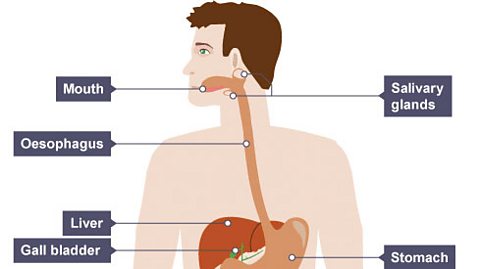
- count2 of 15

- count3 of 15
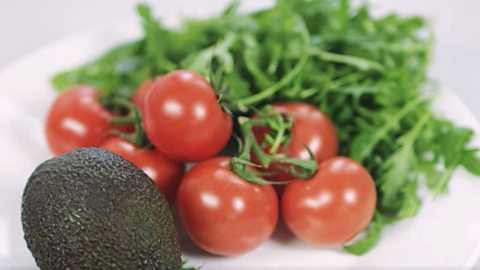
- count4 of 15
